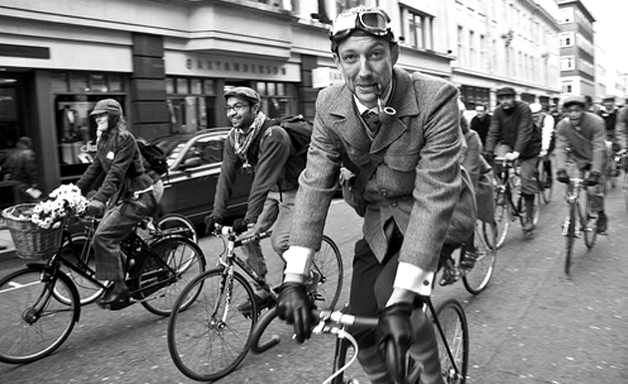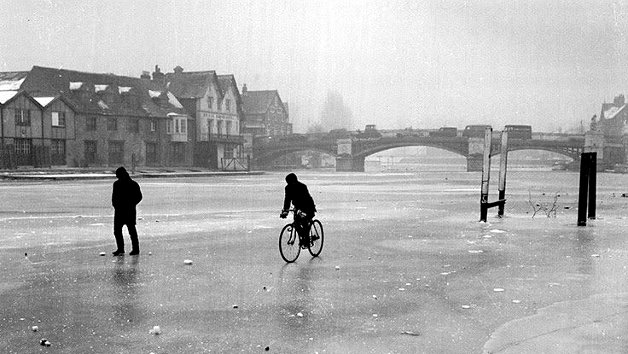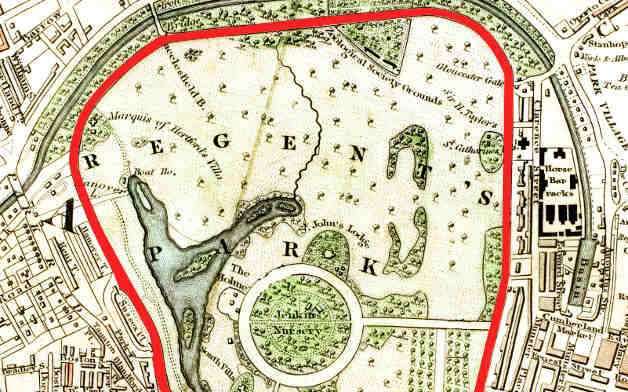Author
 Oh. My. God. How do people cycle to work each day, like this, are they mental? This was my reaction to commuting in London recently despite the fact I’ve commuted in the city by bike for over ten years.
Oh. My. God. How do people cycle to work each day, like this, are they mental? This was my reaction to commuting in London recently despite the fact I’ve commuted in the city by bike for over ten years.

 I love planning bike routes. Crafting the perfect route, away from traffic, quiet roads but not too small they are poorly maintained, routes with hills, with food stops, with views. Each new line is a new road to discover and I genuinely get very excited about riding the lines I’m plotting. My saved routes are like art to me, an archive of pleasure, of memories or roads I’m still to ride.
I love planning bike routes. Crafting the perfect route, away from traffic, quiet roads but not too small they are poorly maintained, routes with hills, with food stops, with views. Each new line is a new road to discover and I genuinely get very excited about riding the lines I’m plotting. My saved routes are like art to me, an archive of pleasure, of memories or roads I’m still to ride.
https://humancyclist.wordpress.com/2016/04/17/bike-commuting-secrets/
 Oh. My. God. How do people cycle to work each day, like this, are they mental? This was my reaction to commuting in London recently despite the fact I’ve commuted in the city by bike for over ten years.
Oh. My. God. How do people cycle to work each day, like this, are they mental? This was my reaction to commuting in London recently despite the fact I’ve commuted in the city by bike for over ten years.
So what changed? Well I moved house and had to find a new route to work. Lazy, I began with a direct route on major roads. Never, ever, ever again. No room to manoeuvre, to enjoy, to breathe. Cars, buses, motorbikes, cyclists. Everywhere. Swarms of the things. Overwhelmed, my brain fried and nerves frayed.
I began riding like a newbie. I slowed and prayed for stabilizers. My usual positive position on the road away from the kerb was merely an invite for dozens of cyclists to undertake me. Uncertain of my route and unsure of myself, I became hesitant, traffic of all varieties surging and merging all around me. Scary.
Cars were the last of my worries. Buses pulling out, cyclists weaving, sorry, filtering, motorbikes aggressively accelerating. Did I mention the traffic lights? Billions of them. I spent more time waiting than riding.
To add to my new-found inexperience I was riding my weekend bike, the brakes on the hoods giving me a lower, more aero position, very much unsuited to keeping an eye on the madness all around me.
I got home stressed, questioning my sanity. My shoulders tight, I was mentally exhausted. If this had been my first cycle commute I would have sold the bike and never complained about the tube again. Who in their right mind would want to commute in such chaos?
The next day? I took the time to craft a route through London’s many back roads. Bliss. I was back in love with cycling again, amazed why anyone would want to cycle on the mean streets. Cycle commuting in London is actually pleasant once you avoid the main roads and find one of the many quiet routes.
Commuting secrets

Secret 1 // Do not cycle on busy routes
Find a quiet way, a B road, a Z road, a dedicated cycle route, a bus lane or shortcuts through housing estates or parks. Do not use the A routes or main thoroughfares, even if that’s the route you know. As a commuter you’ll hit rush hour and rush hour may just hit back.
Secret 2 // Do not cycle on busy routes
Seriously.
Secret 3 // No more secrets
That’s right, that’s all you need to make commuting enjoyable. Sure you can worry about the right clothes, suitable bikes, being visible, tyre widths and the like, but nothing will keep you safer or make your ride more enjoyable than keeping away from the busy roads and junctions.
So tell your friends, help new cyclists find quiet routes to work and don’t be lazy like I was. Plan or stumble upon those lovely secret back routes. You’ll discover more of your city, find new roads and hidden short-cuts, new views and most importantly, the space and time to enjoy your ride. Just be sure to keep off the pavement unless you’re happy to dismount.
Best cycle mapping tools
 I love planning bike routes. Crafting the perfect route, away from traffic, quiet roads but not too small they are poorly maintained, routes with hills, with food stops, with views. Each new line is a new road to discover and I genuinely get very excited about riding the lines I’m plotting. My saved routes are like art to me, an archive of pleasure, of memories or roads I’m still to ride.
I love planning bike routes. Crafting the perfect route, away from traffic, quiet roads but not too small they are poorly maintained, routes with hills, with food stops, with views. Each new line is a new road to discover and I genuinely get very excited about riding the lines I’m plotting. My saved routes are like art to me, an archive of pleasure, of memories or roads I’m still to ride.
Cycle navigation has come on leaps and bounds in the past few years yet there’s still not a perfect mapping tool for this cyclist. I want a mapping service that will 1) find me quiet roads, 2) will not take me down dirt tracks, 3) will avoid pavements, 4) will give me Streetview so I can see dodgy junctions and 5) will easily export to my phone/GPS device. To my knowledge this isn’t possible in one application, particularly points 1-3.
- Cycle.Travel was recommended in the comments of this blog by its creator, Richard. I love it. It’s similar to Cycle Streets below in that it’s main objective is to route you down the quietest routes, perfect for cycling in London. The clever bit is that it uses actual traffic numbers to determine which roads you should use.
The routes it offered me were new routes, something I rarely get as an experienced cyclist in London. And you know what? They are great routes. Quiet, yet still direct. It does route you down some footpaths but they are visibly marked with an icon and you can simply drag and drop the route to avoid the walking sections. You can also export the route when you’re done and see all of the junctions before you ride them. I’d recommend using Cycle.Travel to plot your routes and then using your Garmin to follow the route. I found it difficult to follow a route on my phone. RideWithGPS has a premium feature that may work. Strava has a lab (beta) feature that may work in future – currently broken. MapMyRide’s app routing is pretty poor and crashed the first time I took it for a spin.
- Cycle Streets is also a great place to start planning your route. It gives you three options, a choice of quiet roads, speed or a balance. The site even tells you the pollution levels and the number of traffic lights on your route. Brilliant! Be careful though, the recommended routes also include walking and pavement, which is a major drawback if you like to remain on your bike as I do. You can’t edit routes like you can with Cycle.Travel which means avoiding dead ends when you encounter footpaths is not great. Still, it’s a great place to start finding quiet routes to work.
Tip: The base map it uses is horrible but can be changed by using the little ‘layer’ symbol in the top right of the map. Once you have created a route there’s even more base map options, including Google Maps.
- Strava routes comes close to being the perfect mapping tool depending on where you live. The ‘most popular routes’ feature is fantastic at showing you the most cycled country lanes but in the city tends to plonk you on the main roads, the very ones you want to avoid. Strava also doesn’t separate mountain bikes routes from road routes, a pretty fundamental requirement (odd given they have this data)! Plus they have removed Google Streetview. I like to see my enemies (i.e. busy roads and junctions).
- Google Maps was once one of the best tools for me. The specific routing for cyclists is pretty patchy (dirt tracks, pavement, etc) but I used to get by adapting car routes aiming for smaller roads and using Streetview to ensure all roads are safe. Few sites used to have the ability to drag and plot routes like Google, but this has changed recently. Plus the latest Google Map updates make it difficult for you to export routes to a cycle specific GPX device like a Garmin.
Tip: I hate riding a route which sends my precious clean bike down a dirt or gravel track. You can avoid this by creating your route and then dragging the yellow Streetview man above the map without actually placing it on the map. Google will then highlight all roads in blue that have Streetview, giving you an excellent indication of where the Streetview car has been, which is 99% certain to be well surfaced roads. You can quickly see any part of your route which doesn’t have Streetview and know this is likely (not always) to be a mud track or road that needs closer inspection.
- RidewithGPS was my mapping tool of choice until I wrote this blog and got reader recommendations. Streetview is present so you can see your routes. You can drag and change the route easily and exporting is also good. The interface isn’t the most user-friendly and a little ugly in places but it does the basic job well. The app is good, although you need to go premium to follow imported routes.
What about you, what’s your favourite cycle mapping tool? Any new sites out there? I must admit I’ve not strayed beyond the same sites I’ve been using for years.
For further information log on website :https://humancyclist.wordpress.com/2016/04/17/bike-commuting-secrets/





No comments:
Post a Comment